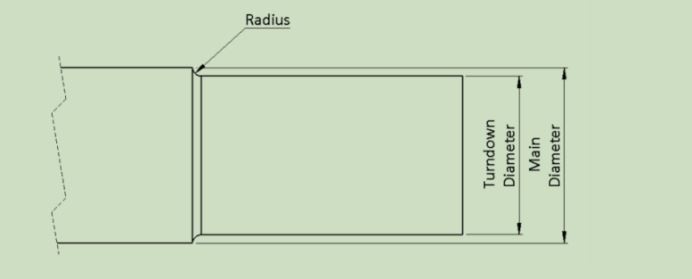 Afrikaans
Afrikaans  Albanian
Albanian  Amharic
Amharic  Arabic
Arabic  Armenian
Armenian  Azerbaijani
Azerbaijani  Basque
Basque  Belarusian
Belarusian  Bengali
Bengali  Bosnian
Bosnian  Bulgarian
Bulgarian  Catalan
Catalan  Cebuano
Cebuano  Corsican
Corsican  Croatian
Croatian  Czech
Czech  Danish
Danish  Dutch
Dutch  English
English  Esperanto
Esperanto  Estonian
Estonian  Finnish
Finnish  French
French  Frisian
Frisian  Galician
Galician  Georgian
Georgian  German
German  Greek
Greek  Gujarati
Gujarati  Haitian Creole
Haitian Creole  hausa
hausa  hawaiian
hawaiian  Hebrew
Hebrew  Hindi
Hindi  Miao
Miao  Hungarian
Hungarian  Icelandic
Icelandic  igbo
igbo  Indonesian
Indonesian  irish
irish  Italian
Italian  Japanese
Japanese  Javanese
Javanese  Kannada
Kannada  kazakh
kazakh  Khmer
Khmer  Rwandese
Rwandese  Korean
Korean  Kurdish
Kurdish  Kyrgyz
Kyrgyz  Lao
Lao  Latin
Latin  Latvian
Latvian  Lithuanian
Lithuanian  Luxembourgish
Luxembourgish  Macedonian
Macedonian  Malgashi
Malgashi  Malay
Malay  Malayalam
Malayalam  Maltese
Maltese  Maori
Maori  Marathi
Marathi  Mongolian
Mongolian  Myanmar
Myanmar  Nepali
Nepali  Norwegian
Norwegian  Norwegian
Norwegian  Occitan
Occitan  Pashto
Pashto  Persian
Persian  Polish
Polish  Portuguese
Portuguese  Punjabi
Punjabi  Romanian
Romanian  Russian
Russian  Samoan
Samoan  Scottish Gaelic
Scottish Gaelic  Serbian
Serbian  Sesotho
Sesotho  Shona
Shona  Sindhi
Sindhi  Sinhala
Sinhala  Slovak
Slovak  Slovenian
Slovenian  Somali
Somali  Spanish
Spanish  Sundanese
Sundanese  Swahili
Swahili  Swedish
Swedish  Tagalog
Tagalog  Tajik
Tajik  Tamil
Tamil  Tatar
Tatar  Telugu
Telugu  Thai
Thai  Turkish
Turkish  Turkmen
Turkmen  Ukrainian
Ukrainian  Urdu
Urdu  Uighur
Uighur  Uzbek
Uzbek  Vietnamese
Vietnamese  Welsh
Welsh  Bantu
Bantu  Yiddish
Yiddish  Yoruba
Yoruba  Zulu
Zulu types of idler in belt conveyor
Types of Idlers in Belt Conveyors
Belt conveyors are ubiquitous in various industries, from mining and manufacturing to logistics and food processing. One of the critical components that ensure the efficiency and effectiveness of a belt conveyor system is the idler. Idlers are the rollers that support the conveyor belt and are vital in maintaining the belt's tension, alignment, and stability. This article discusses the different types of idlers used in belt conveyors, highlighting their applications and advantages.
1. Impact Idlers
Impact idlers are designed to support the conveyor belt at loading points where the material is dropped onto the belt. These idlers absorb the shock of falling materials and prevent damage to the belt. Typically cushioned with rubber or other resilient materials, impact idlers help in distributing the load evenly across the belt, enhancing durability and longevity. They are commonly used in bulk material handling applications, such as in coal, aggregates, and mineral transport.
2. Carrying Idlers
Carrying idlers are the most common type used in belt conveyors. They support the weight of the material on the belt and maintain its alignment during operation. These idlers can be designed with various trough angles, typically ranging from 20 to 45 degrees, to accommodate different types of materials and loading conditions. Carrying idlers are essential for providing a stable path for the belt, ensuring efficient material movement without spillage or misalignment.
3. Return Idlers
Return idlers keep the lower part of the conveyor belt in line during its return journey. Positioned underneath the conveyor belt, they ensure that the belt returns smoothly to the loading area. Usually aligned straight, return idlers help minimize friction and wear on the belt while allowing for easy maintenance and monitoring. These idlers are crucial for reducing operational costs by minimizing wear and tear on the belt.
types of idler in belt conveyor

Self-aligning idlers are designed to correct belt misalignment automatically. They feature a unique design that allows the idler to pivot slightly in the direction of the belt misalignment. This adjustment helps keep the belt centered, reducing wear due to friction and preventing spillage of transported materials. Self-aligning idlers are particularly beneficial in environments where the belt may be subjected to varying loads or uneven surfaces.
5. Training Idlers
Similar to self-aligning idlers, training idlers are employed to ensure the belt remains centered during operation. They are used strategically at different points along the conveyor system. Unlike self-aligning idlers, which can pivot, training idlers may have a staggered arrangement that applies resistance to the belt movement, guiding it back toward the center. This helps maintain optimal belt performance and prolongs its lifespan.
6. Belt Support Idlers
Belt support idlers, also known as support rollers, provide additional support to the conveyor belt, especially in areas subject to high load concentrations. These idlers are usually installed where heavy materials are being transported, offering extra stability and reducing the risk of belt sagging. They are critical in preventing potential disruptions in productivity due to belt deformation.
7. Specialized Idlers
In addition to the standard types mentioned above, there are specialized idlers designed for specific applications. For instance, spiral idlers are used in conveyors that require a spiral-shaped configuration to transport materials around corners. Additionally, rubberized idlers are employed in applications that necessitate added grip to prevent slippage of the conveyed materials.
Conclusion
Idlers play a crucial role in the functionality and efficiency of belt conveyors. By understanding the different types of idlers and their applications, companies can choose the appropriate idlers for their conveyor systems to optimize performance and minimize wear. Whether dealing with heavy bulk materials or ensuring the precise movement of products, the right idler can significantly impact the success of a conveyor system. As industries continue to evolve and seek improved efficiency, innovation in idler design and technology will remain at the forefront of conveyor system advancements.
-
Revolutionizing Conveyor Reliability with Advanced Rubber Lagging PulleysNewsJul.22,2025
-
Powering Precision and Durability with Expert Manufacturers of Conveyor ComponentsNewsJul.22,2025
-
Optimizing Conveyor Systems with Advanced Conveyor AccessoriesNewsJul.22,2025
-
Maximize Conveyor Efficiency with Quality Conveyor Idler PulleysNewsJul.22,2025
-
Future-Proof Your Conveyor System with High-Performance Polyurethane RollerNewsJul.22,2025
-
Driving Efficiency Forward with Quality Idlers and RollersNewsJul.22,2025





























